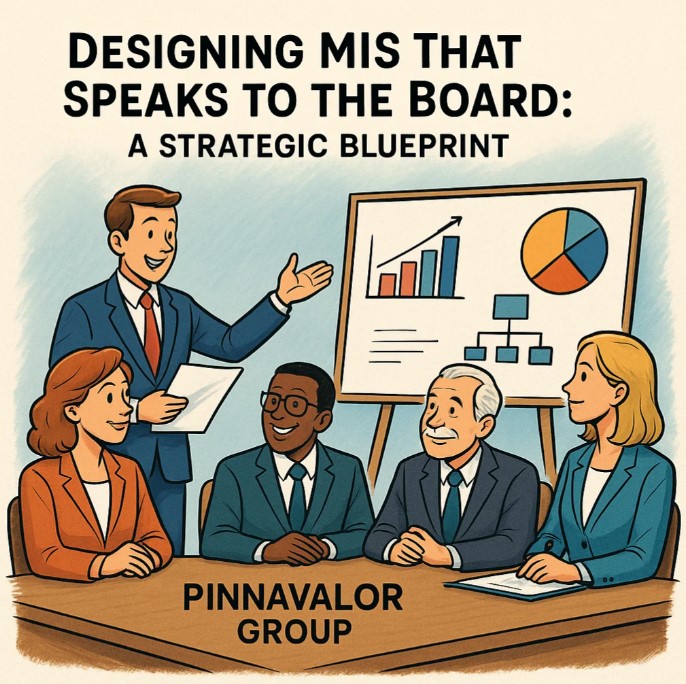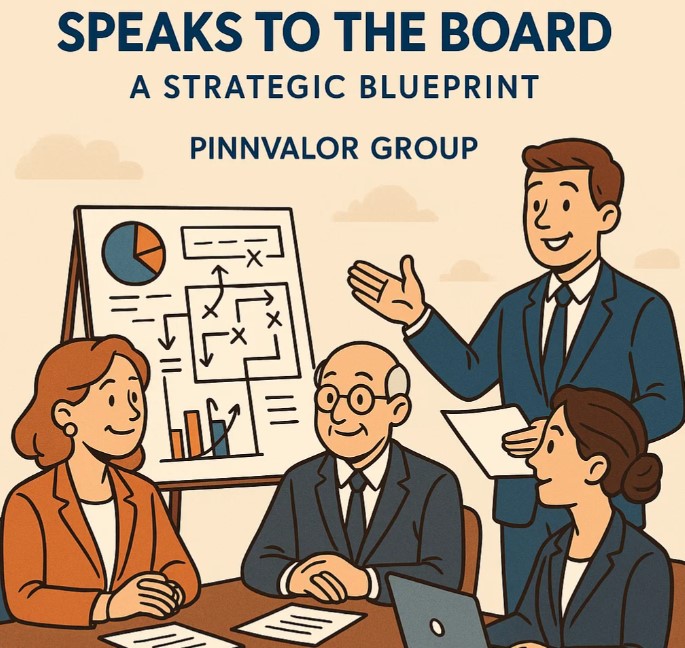
Designing MIS That Speaks to the Board: A Strategic Blueprint
When Management Information Systems (MIS) meet the boardroom, they need to transform from operational data collectors into strategic insight enablers. Designing MIS for board reporting requires not just accuracy and timeliness, but clarity, relevance, and executive-level storytelling. This blog offers a blueprint for creating MIS that truly speaks to the board.
Is your MIS just reporting numbers—or is it driving strategic conversations in the boardroom?
A great MIS doesn’t just inform—it empowers. It aligns reporting with strategy and transforms complexity into clarity.
Why Board-Level MIS is Different
The Board of Directors functions at a strategic altitude. While operational MIS reports may dwell in granular details, board-level MIS must cut through the clutter and focus on performance indicators that reflect the organization’s vision, risk posture, and financial trajectory.
Key Principles of Board-Focused MIS Design
-
1. Relevance over Volume
Board members don’t need a sea of numbers—they need focused information. Your MIS should distill complex data into KPIs, dashboards, and visualizations that spotlight the organization’s health and direction.
-
2. Strategic Alignment
Each component of the MIS must trace back to strategic goals—be it growth, profitability, risk mitigation, or sustainability. MIS should answer: "Are we where we said we’d be?"
-
3. Timeliness and Frequency
Stale data is strategic sabotage. Board MIS should follow a consistent and timely cadence—monthly, quarterly, or customized based on board needs—to facilitate informed decisions without delays.
-
4. Visual Storytelling
Use dashboards, charts, and infographics to tell the story behind the numbers. A well-designed visual can replace a page of spreadsheets, helping board members quickly grasp the trends and red flags.
-
5. Action-Oriented Reporting
Each MIS report should conclude with insights, red flags, and recommended actions. The board should walk away not just informed, but also enabled to guide.
What to Include in Board-Level MIS Reports
-
Executive Summary
Begin with a crisp summary of key insights, performance highlights, and areas of concern. Think of it as the "TL;DR" for the boardroom.
-
Financial Dashboard
Include high-level financial metrics such as revenue, profit margins, cash flow, and budget vs. actuals—along with trends over time.
-
Strategic KPIs
Metrics directly linked to the organization’s strategy, such as customer growth, market share, innovation pipeline, ESG indicators, etc.
-
Risk Metrics
Highlight key risks—financial, operational, compliance, and reputational—along with mitigations and updates.
-
Departmental Snapshots
Brief overviews from key functions (Sales, HR, R&D, Operations) offering a 360-degree view of organizational health.
-
Forward Outlook
End with projections, assumptions, and strategic decisions pending board input.

Best Practices in MIS Presentation for the Board
-
Concise Slides > Bulky Reports
Use PowerPoint decks or dashboards over 100-page PDFs. Keep slides uncluttered and focus on one idea per slide.
-
Standardization & Comparability
Use consistent formats across reporting periods to help board members spot trends and outliers easily.
-
Contextual Commentary
Include short narratives that interpret the numbers—why they moved, what they mean, and what’s next.
-
Interactive Dashboards
When feasible, use digital tools like Power BI, Tableau, or Google Data Studio to let board members drill into data as needed.
Common Pitfalls to Avoid
-
Information Overload
More data doesn’t mean more clarity. Resist the urge to include everything—focus on what matters.
-
Technical Jargon
Board members may not be technical experts. Avoid acronyms and jargon—translate everything into strategic language.
-
One-Size-Fits-All Reports
Tailor MIS for the board audience. What the operations team needs is not what the board needs.
Conclusion: Elevate the Conversation
Effective MIS for board reporting isn’t about data dumping—it’s about insight delivery. When designed right, MIS becomes a strategic tool that enables governance, sharpens foresight, and builds executive trust. It’s not just what you present, but how and why you present it that makes the difference.
Closing Thoughts
Boards don’t need more data—they need more clarity. MIS that "speaks to the board" translates raw metrics into meaningful messages, helping steer the organization with confidence and precision.
